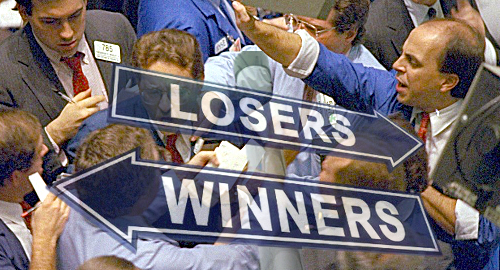 Stock market investors make too many decisions based on the so-called gambler’s fallacy, according to a recent study by German researchers.
Stock market investors make too many decisions based on the so-called gambler’s fallacy, according to a recent study by German researchers.
Earlier this year, the Ostfalia University in Wolfsburg published the results of a study into the decision-making process of capital investors. The study provided 188 test subjects with a limited supply of ‘play dollars’ then presented them with a number of investment options containing varying degrees of risk.
The researchers were looking for signs of three separate phenomena: herding, which involves mimicking the decisions made by a majority of players or the most successful player; status-quo bias, in which players choose not to take any action based on the fear of regretting their actions; and the gambler’s fallacy, in which players expect a certain outcome based on a history of previous outcomes.
Other studies have shown that problem gamblers are more likely than non-problem gamblers to see patterns in random events where no pattern exists, i.e. these gamblers convince themselves that because a roulette wheel has returned a ‘red’ result in each of the last nine spins, a ‘black’ result is more likely on the next spin, despite the outcome of every spin being completely random.
The researchers found little evidence that herding or status-quo bias contributed to their test subjects making poor portfolio choices. But the gambler’s fallacy was deemed responsible for over 40% of all portfolio choices, compared to 26% for an “incomprehensible explanation” and just under 20% for “rational consideration.”
From interviews with their test subjects, the German researchers found that the study participants were prone to believing that a poorly performing stock was likely to rebound in the next round, leading some players to make repeated investments in that stock, even as it continued to decrease in value.
With typically dry German observation, the researchers concluded that many of the participants were “zealous to infer future developments from past random events” and that the majority (62.3%) of portfolio choices made by their test subjects were “non-optimal,” largely due to the “substantial influence” of the so-called gambler’s fallacy.